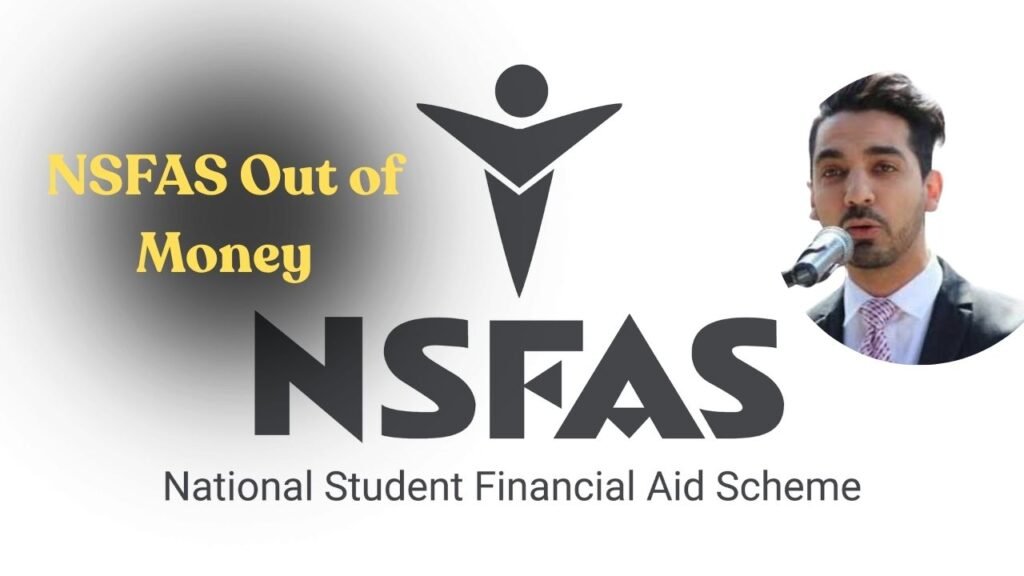Imagine relying on monthly student funding to pay rent, buy food, and keep studying — and suddenly, you’re told the money has run out. That’s exactly what’s happening for thousands of South African students who depend on the National Student Financial Aid Scheme (NSFAS). The shocking news that NSFAS is short on funds has left many young people worried about their future.
So, how did things get this bad? How are students managing to survive? And what’s being done to fix it? Let’s break it down.
Why NSFAS Is Running Out of Money
NSFAS helps underprivileged students pay for university or college. It covers tuition, housing, meals, and even transport. But now, the organization says it’s struggling financially.
There are a few reasons behind this. One big issue is debt — NSFAS is still owed billions of rand from old student loans that were never repaid. That money was supposed to keep the fund running, but with so much missing, there’s less cash to help current students.
Another problem is demand. More and more students are applying for help every year, but the budget hasn’t grown fast enough to cover everyone. On top of that, administrative problems and mismanagement in the past made things worse, leaving the fund in a deep financial hole.
In short, NSFAS is trying to support too many students with too little money — and now, it’s showing.
How Students Are Coping with the Crisis
When your main source of support dries up, you have to get creative. And that’s what thousands of students are doing right now.
Delayed Payments and Tough Choices
Many students say their allowances are delayed or not paid at all. That means going hungry, borrowing money, or living in unsafe, overcrowded rooms just to stay enrolled. Some are even skipping classes to work part-time jobs or do freelance gigs to survive.
Side Hustles and Sacrifices
To make ends meet, students are taking on side hustles — tutoring, delivery work, babysitting — anything to earn a bit extra. But juggling work and studies is exhausting, and it often affects their grades.
Dropping Out or Taking a Break
Sadly, some students simply can’t afford to continue. Without funding, they’re forced to drop out or take a gap year. Dreams are being paused because the system failed to plan ahead.
Protests and Public Pressure
Students are not staying silent. Across campuses, protests and petitions are rising. They’re demanding answers, accountability, and urgent help. When education is your only path out of poverty, fighting for it becomes a necessity.
What’s Being Done to Fix the Problem
While the situation is serious, there are steps being taken to stabilize NSFAS and prevent a total collapse.
Cleaning Up the System
New leadership is focusing on better governance and transparency. The goal is to fix old mistakes, tighten the system, and make sure funds are properly managed in the future.
Collecting Old Debts
NSFAS plans to recover money from past beneficiaries who are now employed. By collecting those overdue payments, they hope to refill the pot and fund new students.
Working with Government and Universities
The scheme is teaming up with universities and the government to streamline applications, fix payment delays, and improve communication with students.
Finding New Funding Sources
Officials are exploring other ways to raise money — such as partnerships, donations, and private funding — so that NSFAS doesn’t rely on one single source.
Targeting Support
With funds running low, NSFAS is reviewing applications more carefully. That means prioritizing students who are most in need, to make sure the limited money goes where it matters most.
These changes won’t happen overnight, but they’re important steps toward building a stronger, fairer system that students can depend on.
What This Means for South Africa’s Future
The NSFAS crisis is a warning sign for the country’s education system. When financial aid fails, it affects more than just students — it threatens the entire economy. Without affordable access to higher education, fewer young people can gain the skills needed to build successful careers.
But this can also be a turning point. The crisis could push leaders to create better systems, stronger management, and smarter funding models. It’s a tough lesson, but maybe it’s the shake-up needed to protect future generations of students.
Conclusion
NSFAS admitting that it’s out of money is a wake-up call. Thousands of students are left uncertain, stressed, and struggling to survive. Yet, there’s still hope. Efforts to recover funds, improve management, and secure new resources show that change is possible.
Students deserve consistency, not chaos. With real accountability and smarter funding, NSFAS can rise again — stronger, fairer, and ready to support the dreams of every deserving student.
FAQs
Why is NSFAS out of money?
Because of unpaid student debts, poor management in the past, and rising demand for funding that outgrew the available budget.
Are students still getting their allowances?
Some are, but many report delays or partial payments due to the financial shortfall.
What is NSFAS doing about the crisis?
They’re recovering old debts, improving systems, and exploring new funding options to rebuild their financial base.
Can students still apply for NSFAS funding?
Yes, applications remain open, but not everyone will be approved. Priority goes to the neediest students.
Will things get better soon?
It might take time, but with proper leadership and accountability, NSFAS can recover and become more reliable.





